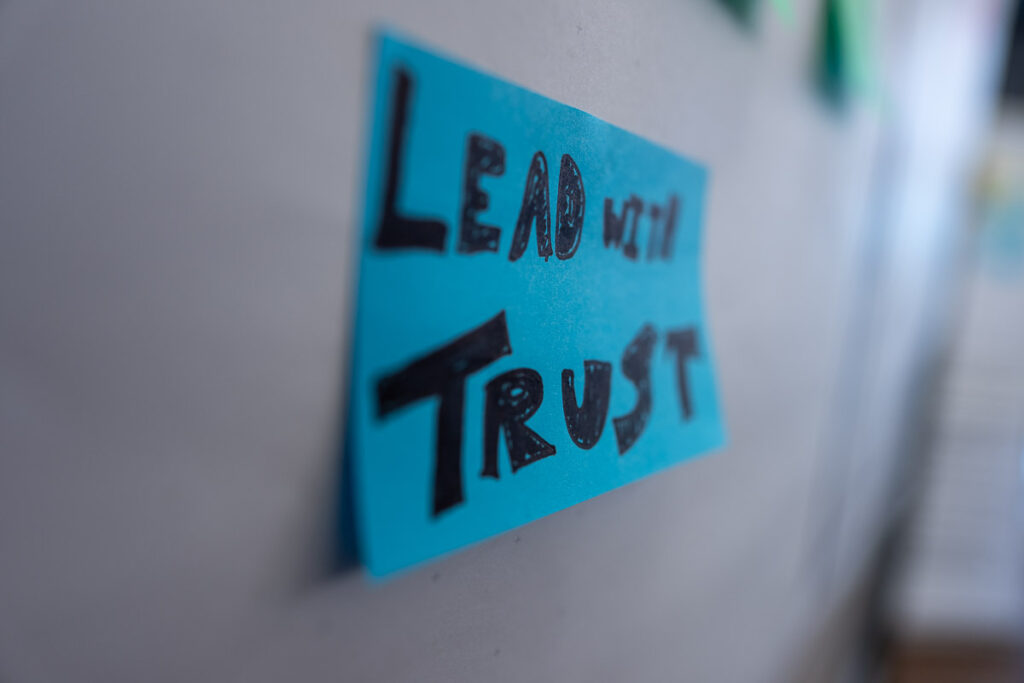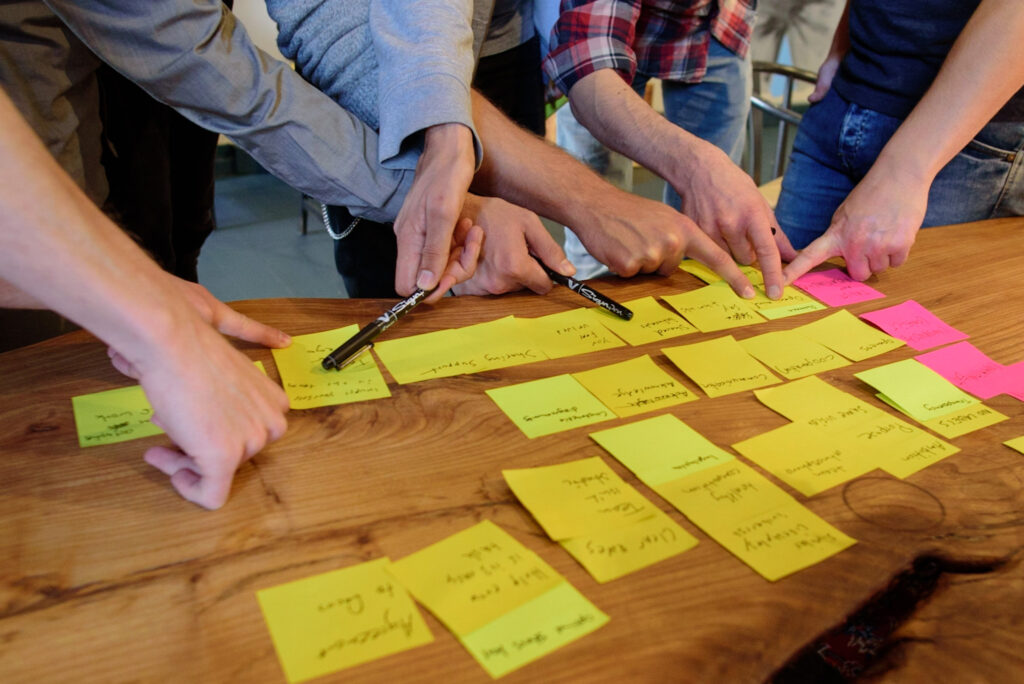How a long-term leadership program helped build stronger leaders, increase engagement, and boost collaboration across teams.
The Challenge: When Engagement Slipped, Leadership Stepped Up
When the executive team at a large game studio noticed a dip in employee engagement in their biannual survey, they took it as a signal, not just a statistic.
They knew that leaders play a crucial role in shaping culture and driving engagement and motivation. So they chose to invest in what matters most over time: the people who lead.
The hypothesis was clear: If we can support and grow our leaders at all levels, we can uplift the entire organization. What followed was the beginning of a multi-year collaboration to design and run a long-term leadership program tailored to the studio’s unique needs.

The Approach: Building a Program That Leaders Actually Want
Rather than taking a one-size-fits-all route, we co-created a leadership journey grounded in the organization’s real challenges, culture, and aspirations.
Here’s how we shaped the program:
1. Listening First
We started by interviewing leaders across the organization, from the executive team to team leads. A workshop with the executive team helped align on key themes and strategic needs. This ensured the content addressed what mattered most on the ground.
2. A Structured, Real-World Learning Journey
The program ran over four-five months, balancing learning with practice:
- Individual Interviews
Before the program, each participant was interviewed to set expectations, enroll them, ensure a good fit, and have them start thinking about their learning objectives.
- Startup Workshop
A blend of leadership theory, personal exploration, group connection and setting the foundation for learning for the program. A key part is building a psychologically safe environment for the participants.
- Bi-Weekly Learning Labs
These short, interactive sessions acted as “labs” for experimenting with new tools, mindsets, and conversations in a safe space. Each learning lab was themed to the specific topics decided earlier and held new theories to be explored. - Individual Coaching
Each participant received six professional coaching sessions, aligned with ICF standards. An initial session with their manager, as well as a closing one after the coaching series, was included to strengthen support and accountability. This is where the concepts of the program can be contextualized and made practical for each participant and their own personal development goal..
- Buddy Groups
Between sessions, participants met in groups of three to support each other. It is an opportunity to bring up challenges, wins, or go deeper into the topics from the Learning Labs. - Closing Workshop
The journey wrapped up with a workshop to summarize and consolidate the learning and results. The focus here was on structured reflection, evaluation of impact, and help to structure the learning post-program.

The Impact: More Engaged Leaders, Stronger Culture
The results were visible, and felt, across the studio.
“Investing in the leadership program has primarily given us increased engagement among our leaders. They feel empowered by having new tools and a common vocabulary to use in their daily work.
The program has led to increased community and understanding, better collaboration across the organization, and increased strategic ability. The leaders spread this to their employees, and it produces results in the business.
The fact that the participants received individual coaching in parallel has been very positive. The participants feel empowered by having access to an objective party with dedicated time for them who supports their personal development during the training.”
– Head of Studio
Some of the key outcomes included:
- Increased engagement and confidence among leaders
- A shared leadership vocabulary and toolkit across the organization
- Stronger cross-functional collaboration and empathy
- Greater strategic alignment and initiative-taking
- A growing internal community of leaders who support each other
What began as a top-down initiative soon became something employees asked to join. From early cohorts who were “sent by management” to later ones that filled through waitlists, the shift in ownership and enthusiasm was clear.
What We Learned Along the Way
As facilitators and partners in this journey, we gained valuable insights:
- Long-term partnerships unlock deeper change. Seeing impact over time, at both individual and organizational levels, was a privilege.
- Mixed cohorts create magic. Mixing leaders from different departments, seniority levels, and period of deployment led to richer learning and stronger bonds.
- Even seasoned leaders want to grow. Senior executives engaged deeply and reported new perspectives, despite their deep experience.

Why This Worked: Principles That Matter
Several design choices made this program stand out:
- The program had clear sponsorship and purpose.
- The program is based on a well proven learning structure, integrating theory with practice.
- Leadership was treated as a practice, not just a position.
- Learning was contextual, personal, and rooted in real work.
- Psychological safety made it easier to open up, take risks, and try new behaviors.
- Coaching gave participants space to go deeper and stay accountable.
- Reflection and peer support helped learning stick.
Curious What This Could Look Like in Your Organization?
If you’re noticing signals, like declining engagement or inconsistent leadership practices, it might be time to support your leaders in a deeper, more sustainable way.
Let’s talk about how a co-created, context-aware program could help your leaders thrive and your culture grow.
We have also had success with similar learning programs for other roles like, Product Managers, Product Leaders, Agile and Team Coaches.
Get in touch with us
jennie@jenuinecoaching.com
michael.gothe@crisp.com



